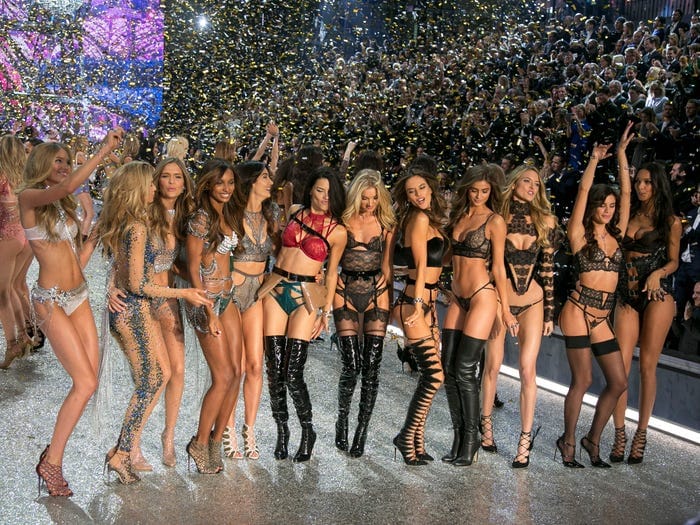Victoria's Secret Revives Iconic Fashion Show, Aims to Reclaim Glamour While Moving Away from "Woke" Trends
In a move that has fashion enthusiasts buzzing, Victoria's Secret has announced the return of its world-renowned fashion show after a six-year hiatus, signaling not just a revival of its spectacular runway but also a strategic pivot in its branding strategy. The show, set to air today, marks
In a move that has fashion enthusiasts buzzing, Victoria's Secret has announced the return of its world-renowned fashion show after a six-year hiatus, signaling not just a revival of its spectacular runway but also a strategic pivot in its branding strategy. The show, set to air today, marks a significant moment for the lingerie giant, which has faced tumultuous times over its approach to diversity, equity, and inclusion (DEI) initiatives.
Originally, the Victoria's Secret fashion show was a hallmark of glamour, featuring the brand's iconic Angels in elaborate, fantasy-themed lingerie displays that captivated millions worldwide. However, the show was discontinued in 2018 amidst criticism for not reflecting contemporary body positivity and diversity standards. This led the company to embark on a transformation towards inclusivity, which included phasing out the term 'Angels' and focusing on a broader representation of body types, genders, and backgrounds.
Gigi Hadid reveals she'll be paying homage to her bestie Taylor Swift on the catwalk during the Victoria's Secret Fashion Show tonight! pic.twitter.com/FUj4JxRUCA
— Entertainment Tonight (@etnow) October 15, 2024
Fast forward to today, and Victoria's Secret seems to be recalibrating its approach. The decision to bring back the fashion show is intertwined with the company's new direction to focus on what made it iconic in the first place: glamour, sexiness, and high fashion, while not entirely abandoning the lessons learned from its inclusivity pivot. According to insights from recent posts on X, the sentiment around this return is mixed, with many celebrating the return to what they perceive as the brand's roots while others express concern over the potential rollback on diversity.
The show promises to feature a lineup of performers and models that blend old and new, with names like Adriana Lima, Tyra Banks, and Gigi Hadid expected to grace the runway, alongside performances from Cher, indicating a blend of nostalgia with modern allure. This move is Victoria's Secret's attempt to navigate the fine line between its traditional allure and the modern demand for inclusivity, aiming to capture both its original fanbase and newer audiences.
Alessandra Ambrosio and Adriana Lima will walk in the Victoria’s Secret Fashion Show tonight. pic.twitter.com/FihnOzwFuf
— 21 (@21metgala) October 15, 2024
The company's strategic shift was hinted at by executive statements and social media teases, suggesting that while inclusivity won't be entirely ignored, the focus is now on what they term as "sexiness that can be inclusive." This could mean a return to the visually spectacular, fantasy-driven elements of past shows, albeit with a broader cast that might still reflect some diversity but within the confines of traditional beauty standards that made the brand famous.
This revival comes at a time when Victoria's Secret has publicly acknowledged that their previous deep dive into DEI initiatives did not deliver the financial success hoped for, with sales figures indicating a decline. The brand's new strategy involves enhancing profitability by reintroducing elements that resonate with their core identity, like the fashion show, while also expanding into new product categories like activewear and swimwear.
The 2024 Victoria's Secret Fashion Show is underway and the models are getting ready. ✨
— Good Morning America (@GMA) October 15, 2024
Check out all the behind-the-scenes photos here:https://t.co/zVWovIy5jF
The Victoria's Secret fashion show's return today is not just a spectacle but a statement on the evolving nature of brand identity in the face of cultural shifts. It remains to be seen how this balance between returning to its roots and maintaining some level of inclusivity will be received, but for now, all eyes are on the runway, eager to see if Victoria's Secret can indeed bring sexy back without losing touch with today's diverse consumer landscape.

